As a girl from a non-descriptive and grey Khrushchev‘s block, based close to Vilnius central train station, she had no idea how big her career will be. But different walks of life and given opportunities finally brought her to the center of the Baltics design scene and then – a worldwide recognition. “If you want to have own identity – you need to know your roots”, says Lithuanian clothes designer Julia Janus, 45, with a long list of famous local and foreign celebrities, style icons, politicians and even presidential wives among her clients.
“All given efforts proved to give right results. Last year we took part in different fashion fairs, and now looking at the geography of our clients, it seems that we found a code to success. Our inspiration is local, but our fashion is global. I must say, I’ve never imagined that one day I’ll be seen as a competitor by designers in Japan, Australia, South Africa, United States, France, Lebanon, United Kingdom and so on”, says Julia, one the most noticeable designer from the Baltics.
What, being a Soviet youngster, was she wearing back in the 80’s? Clothes that were kind of catch at notoriously empty shops or sown by local tailors, or even self-made at home? “My mother, a very elegant lady, was going to her tailor, taking me together as well”, remembers Julia.
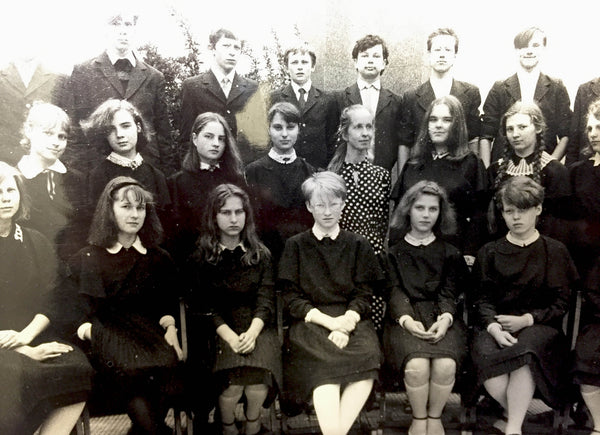
Clothes, produced at local factories, were far removed from glamour or trends seen in the West. A window to the fashion world for ordinary tailors was German magazine ‘Burda Moden’, touched by many different hands to reproduce interesting and different models for their clientele.
The deficit of everything in the Soviet Lithuania brought a number of ambitious movements. Including fashion. With the scent of revolution in the air, Vilnius was exploding from artistic ideas in 1988.
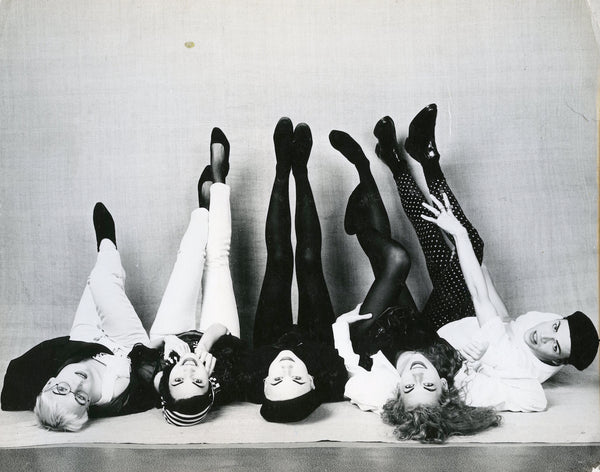
Young and rebellious Julia got a chance to step into the ‘Vilnius Fashion House’ – the Mecca for fashionistas of the 90‘s. This palace had different fabrics of the highest quality. They were very limited and strictly counted to stop materials famously getting out through the back door. Pretty ordinary scene in the Soviet countries at the time.
“Times were gray and black. Not because of styles, but of poorness”, remembers Julia.
Straight after Lithuania got its independence back, things were not much easier. “A choice of fabrics was very limited: we had or to use leftovers from the Soviets, or to buy something expensive from France and Italy. The middle ground was to get materials from still operating Lithuanian factories. Right over there I found plaids with fringes and transformed them into stylish coats. That were sold at the fashion fairs with a great success”, smiles designer.
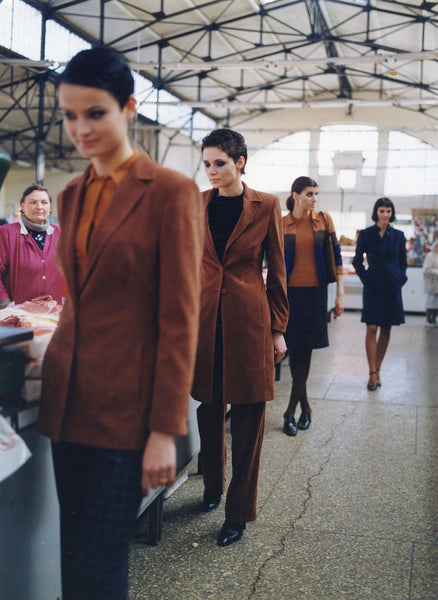
Photo sessions were also supposed to be more experimental, dynamic, preferably done outside a studio. “For example, at a trolleybus station! In one of the images you can see a model standing at the front of the stop and behind her – I and a make-up artist - sort of massive stage actors filling in the space. But even today, some of those photos look very relevant”, says J. Janus.
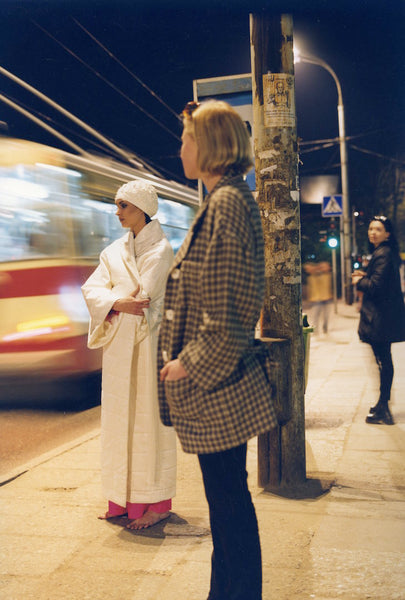
With her appetite for colors and forms growing and rebel beating even stronger, Julia developed the most notorious collection with focus on male fashion – ‘Son of the Bitch’. “It was my personal revolution. I wanted to discover young, free-minded fashion. A guy in the rain, a running Pitbull... The symbols of breaking the rules that were very special to me. Even today nothing has changed. I’ve just hidden the rain inside and covered the Pitbull behind the draperies. Not the glamourous, shining dresses and perfect silhouettes make me happy, but the fashion that frees and opens the mind. I‘m still making my revolution, just the message is different. Style with no age and size limits - now is my core interest“, says Julia.
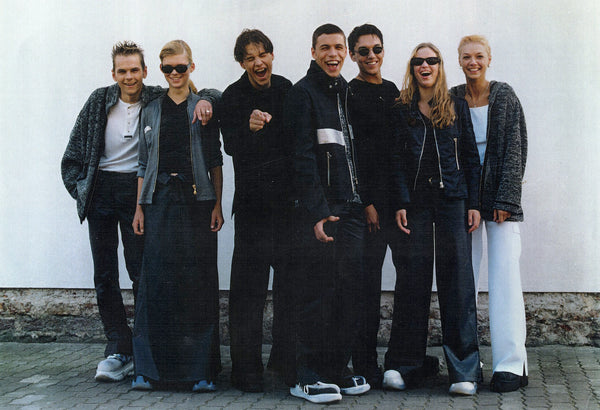
Even if ‘Son of the Bitch’ collection appeared nearly 20 years ago, up to this day its fans forbid now their wives to through away those eponymous t-shirts, trousers and jackets. All while Julia continues using her magical touch of telling stories, opening minds, helping men and women to find their own style, connect to their roots and surroundings. And all through the means of fashion, inspired by the nature and rich colours of the Baltics’ history.
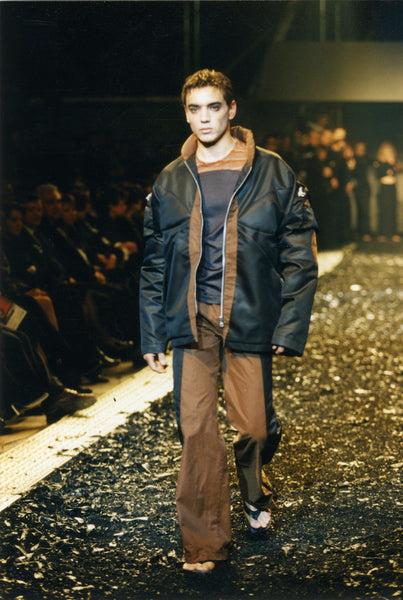
Her company ‘Julia Janus’ has also finally found its true DNA: there is no need to repeat ethnic ornaments to be connected to the local region and customs. It is enough to concentrate on the surrounding environment it exists in. It is not just Lithuania. It’s also Latvia, Estonia, Poland, Germany, Finland – one big and multicultural region around the Baltic Sea with numerous similarities in nature, food and architecture.

“For me it’s very important to stay true to the specific elements of my own nation. I can talk as many languages as I want, travel all around the world, but through my creative ideas I would like to be seen not as a Cosmopolitan, but rather like a designer who comes from the North of Europe - the Baltics“, finishes Julia.


